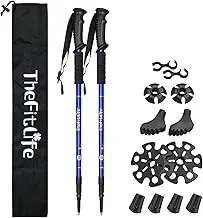After spending over a decade exploring Europe's most breathtaking mountain ranges, I've discovered that guided hiking tours in Europe offer the perfect blend of adventure, safety, and cultural immersion. From the dramatic peaks of the Dolomites to the pristine Alpine meadows of Switzerland, this comprehensive guide shares everything I've learned about choosing the right tour, essential gear, and hidden gems that only local guides know about.
Why Choose Guided Hiking Tours in Europe
When I first ventured into the European Alps fifteen years ago, I was convinced that solo hiking was the only way to truly experience the mountains. However, after joining my first guided hiking tour in Europe through the Bernese Oberland, my perspective completely changed. The depth of knowledge, safety, and cultural insights that experienced guides provide transformed what could have been just another hike into an unforgettable journey of discovery.
Safety and Navigation
Professional guides possess intimate knowledge of local weather patterns, terrain challenges, and emergency procedures. During my trek through the Dolomites, our guide's quick decision to alter our route due to incoming storms likely prevented a dangerous situation. They carry emergency communication devices and know evacuation routes that aren't marked on standard maps.
Local Expertise
Guides share stories and insights you won't find in guidebooks. In the Pyrenees, our guide showed us ancient smuggling routes and explained how local shepherds still use traditional paths. This cultural context enriches the hiking experience beyond just physical achievement.
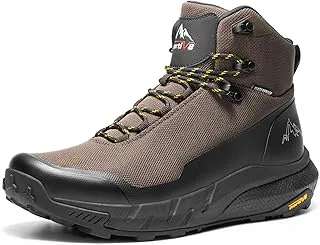
Stress-Free Logistics
One of the greatest advantages of guided hiking tours in Europe is the elimination of logistical headaches. Professional tour operators handle accommodation bookings, meal arrangements, and transportation between trailheads. I remember the relief of not having to navigate complex train schedules in rural Switzerland or worry about finding available mountain huts during peak season.
The gear transportation service is particularly valuable on multi-day treks. While you carry a daypack with essentials, your main luggage travels separately to each overnight stop. This allows you to focus entirely on the hiking experience and stunning scenery without the burden of a heavy backpack.
Group Dynamics and Social Benefits
Joining a guided hiking tour in Europe often leads to lasting friendships with like-minded adventurers. The shared experience of challenging climbs, breathtaking sunrises, and cozy mountain hut evenings creates strong bonds. I've maintained friendships with people I met on tours years ago, and we continue to plan hiking adventures together.
For those interested in exploring more family-friendly hiking destinations, guided tours often accommodate various skill levels within the same group, making them perfect for multi-generational adventures.
Top European Hiking Destinations
Europe offers an incredible diversity of hiking experiences, from dramatic Alpine peaks to gentle coastal paths. Based on my extensive experience exploring these regions, here are the destinations that consistently deliver unforgettable guided hiking tours in Europe.
The Italian Dolomites
The Dolomites stand as one of Europe's most spectacular hiking destinations, offering guided hiking tours in Europe that combine challenging terrain with extraordinary beauty. The region's unique geological formations create a landscape unlike anywhere else on earth, with towering limestone spires that glow pink and orange during sunrise and sunset.
The Alta Via routes are particularly popular for guided tours, with Alta Via 1 being the most accessible for intermediate hikers. During my week-long trek on this route, we stayed in comfortable rifugios (mountain huts) that serve hearty Italian cuisine and local wines. The daily distances range from 8-15 kilometers, making it suitable for hikers with moderate fitness levels.
What makes the Dolomites special for guided hiking tours in Europe is the excellent infrastructure. Well-marked trails, numerous mountain huts, and reliable cable car systems provide safety nets that allow guides to customize routes based on weather conditions and group capabilities.
Swiss Alps
Switzerland's pristine Alpine environment offers some of the most well-organized guided hiking tours in Europe. The Swiss have perfected mountain tourism over centuries, creating a network of marked trails, comfortable accommodations, and efficient transportation systems that make guided tours exceptionally smooth.
The Haute Route from Chamonix to Zermatt represents the pinnacle of Alpine hiking experiences. This challenging 200-kilometer route typically takes 10-12 days and requires good fitness levels. However, shorter segments like the Grindelwald to Wengen traverse offer stunning Alpine scenery without the full commitment.
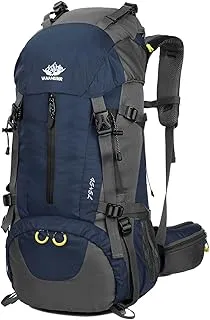
French Pyrenees
The Pyrenees offer a wilder, less crowded alternative to the Alps while maintaining excellent guided tour options. The GR10 long-distance trail provides the backbone for many guided hiking tours in Europe through this region. The landscape varies dramatically from lush green valleys to stark mountain peaks, with the added bonus of fantastic French and Basque cuisine in valley towns.
What I particularly love about Pyrenean guided tours is the cultural diversity. You'll encounter French, Spanish, and Basque influences, often within a single day's hike. The guides are typically locals who grew up in these mountains and can share stories about everything from ancient pilgrimage routes to modern conservation efforts.
Scottish Highlands
For those seeking dramatic landscapes with rich cultural history, guided hiking tours in Europe through the Scottish Highlands offer unparalleled experiences. The challenging terrain, unpredictable weather, and complex navigation make professional guides essential for safety and enjoyment.
The West Highland Way remains Scotland's most popular long-distance trail, but guided tours often include lesser-known routes like the Cape Wrath Trail or sections of the Skye Trail. These easy scenic hikes can be adapted for various fitness levels while maintaining their wild character.
Essential Gear for European Hiking Tours
Proper gear can make the difference between a memorable adventure and a miserable experience. After years of testing equipment across European mountain ranges, I've developed a comprehensive understanding of what works in diverse conditions. While guided tours reduce some gear requirements, personal equipment remains crucial for comfort and safety.
Backpacks for Day Hiking
For most guided hiking tours in Europe, a quality daypack is essential. You'll carry water, snacks, extra layers, rain gear, and personal items during daily hikes while your main luggage travels separately to the next accommodation.
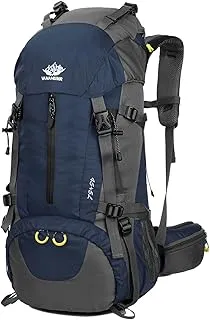
WoneNice 50L Waterproof Hiking Backpack
Perfect for multi-day European hiking tours with rain cover and ergonomic design.
Hiking Boots
Reliable hiking boots are non-negotiable for European mountain terrain. The varied conditions—from rocky Alpine paths to muddy forest trails—demand boots that provide support, protection, and grip. Waterproof boots are essential given Europe's changeable weather patterns.
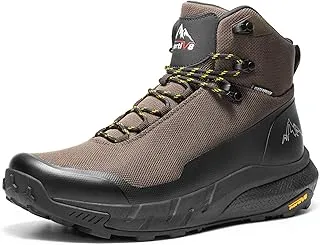
NORTIV 8 Waterproof Hiking Boots
Lightweight, breathable, and waterproof boots ideal for European trail conditions.
Trekking Poles
Trekking poles significantly reduce stress on knees during descents and provide stability on uneven terrain. For guided hiking tours in Europe, collapsible poles are preferred as they can be easily stored when not needed, such as during cable car rides or while dining in mountain huts.

Trekology Trek-Z Collapsible Trekking Poles
Ultra-lightweight and compact poles perfect for European hiking adventures.
Navigation and Reference Materials
While guides handle navigation, having your own maps and guidebooks enhances the experience. Understanding the route and surrounding geography helps you appreciate the guide's expertise and allows you to contribute to route discussions when weather or conditions require flexibility.
Digital maps on smartphones provide excellent backup, but physical maps remain more reliable in mountain environments where battery life and signal coverage can be issues. Many hikers interested in wheelchair accessible hikes find that detailed topographic maps help identify suitable terrain in advance.
How to Choose the Right Tour
Selecting the perfect guided hiking tour in Europe requires careful consideration of multiple factors. Your choice will determine not just the scenery you'll see, but the entire character of your adventure. After participating in over thirty guided tours across Europe, I've developed a systematic approach to evaluation that ensures the best possible experience.
Assessing Difficulty Levels
Tour operators use various grading systems, but these can be inconsistent between companies. Look for detailed daily itineraries that specify distances, elevation gain, and technical difficulty. A "moderate" rating might mean 15 kilometers with 800 meters of elevation gain for one operator, but 20 kilometers with 1200 meters for another.
Pro Tip from Personal Experience
During my first Dolomites tour, I underestimated the cumulative fatigue from consecutive hiking days. Even if individual days seem manageable, consider the total distance and elevation over the entire tour. Recovery time between challenging days is crucial for enjoyment.
Group Size and Dynamics
Smaller groups (8-12 people) provide more personalized attention and flexibility, while larger groups (15-20 people) often offer better value and more social interaction. My preference leans toward smaller groups for technical terrain and larger groups for easier routes where social aspects enhance the experience.
Consider the group composition as well. Some tours attract predominantly older participants, while others appeal to younger adventurers. Family-oriented tours often accommodate various fitness levels, making them excellent choices for those exploring hiking trails good for kids.
Accommodation Standards
European hiking tours offer accommodation ranging from basic mountain huts with shared facilities to luxury hotels with spa services. Mountain huts provide authentic Alpine experiences but may lack privacy and comfort. Hotels offer comfort but can feel disconnected from the mountain environment.
The best tours often combine both accommodation types, using mountain huts for the full Alpine experience and hotels for rest and recovery days. This hybrid approach maximizes both authenticity and comfort throughout your guided hiking tour in Europe.
Understanding Tour Pricing
Guided hiking tours in Europe vary dramatically in price, from budget options around €80-100 per day to luxury experiences exceeding €300 per day. Price differences usually reflect accommodation quality, group size, included meals, and the guide-to-participant ratio.
Always check what's included versus excluded. Some tours include all meals, while others cover only breakfast. Transportation costs, equipment rental, and optional activities can significantly impact your total investment. The most expensive tour isn't always the best value, but extremely cheap options often compromise on safety or guide quality.
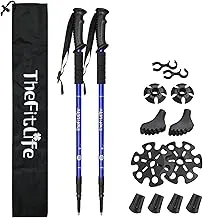
Seasonal Considerations and Best Times
Timing your guided hiking tour in Europe correctly can transform a good experience into an extraordinary one. European mountains experience dramatic seasonal changes that affect everything from trail accessibility to crowd levels. Understanding these patterns helps you choose the optimal time for your adventure.
Summer: Peak Season Adventures
June through August represents peak season for guided hiking tours in Europe. All trails are accessible, mountain huts operate at full capacity, and weather is most predictable. However, popular routes become crowded, prices reach their highest levels, and accommodation requires early booking.
During my July trek on the Tour du Mont Blanc, we encountered hundreds of other hikers daily. While the atmosphere was festive and international, the crowds detracted from the wilderness experience. Early morning starts (6:00 AM) helped us enjoy popular viewpoints before the masses arrived.
Summer Advantages
- All trails accessible
- Stable weather conditions
- Full mountain hut services
- Long daylight hours
- Vibrant Alpine flora
Summer Challenges
- Heavy crowds on popular routes
- Higher accommodation costs
- Booking competition
- Afternoon thunderstorms
- Hot valley temperatures
Shoulder Seasons: The Sweet Spot
May and September offer excellent conditions for guided hiking tours in Europe with fewer crowds and often better weather stability. Late spring brings wildflower blooms and snowmelt waterfalls, while early autumn delivers crystal-clear skies and comfortable temperatures.
My favorite European hiking experience occurred during a September tour in the Austrian Alps. The weather was stable, crowds had diminished, and the autumn colors created a magical landscape. Mountain huts remained open but offered more relaxed atmospheres with opportunities for genuine conversation with staff and other guests.
Winter and Early Spring Options
Winter guided hiking tours in Europe focus on lower elevations and specialized activities like snowshoeing or winter hiking. These tours offer unique perspectives on familiar landscapes and attract smaller, more dedicated groups.
March and April present challenging conditions with unpredictable weather and limited high-altitude access, but valley-level hikes can be spectacular. Snow-free routes at lower elevations provide opportunities to experience European mountain culture without summer crowds.
Preparation Tips and Training
Physical preparation significantly impacts your enjoyment of guided hiking tours in Europe. While guides accommodate various fitness levels, being properly prepared allows you to fully appreciate the experience rather than struggling to keep up. A structured approach to preparation ensures you arrive confident and capable.
Physical Conditioning
Start your training program at least 8-12 weeks before your tour. Focus on cardiovascular endurance, leg strength, and core stability. Regular hiking with a loaded backpack provides the most specific training, but gym workouts, cycling, and swimming offer excellent supplementary conditioning.
Gradually increase your training intensity and duration. Begin with 30-minute walks and progress to 4-6 hour hikes carrying the pack weight you'll use on tour. Include hill training to prepare for the elevation gains common in European mountain tours.
12-Week Training Timeline
- Weeks 1-4: Build base fitness with regular walks and light gym work
- Weeks 5-8: Add pack weight and increase duration, include hill training
- Weeks 9-12: Simulate tour conditions with back-to-back hiking days
Breaking in Equipment
New hiking boots require proper breaking-in to prevent blisters and discomfort during your tour. Wear them for short walks initially, gradually increasing distance and duration. Different sock combinations help identify the most comfortable setup for various conditions.
Essential Europe Hiking Guide
Comprehensive guidebook covering all major European hiking destinations with detailed maps and route descriptions.
Mental Preparation
Mental preparation often receives less attention than physical training but proves equally important. European mountain weather can change rapidly, requiring flexibility and positive attitudes when plans change. Guided tours occasionally modify routes due to conditions, and mental adaptability ensures you enjoy unexpected alternatives.
Research your destination thoroughly, understanding the culture, local customs, and basic language phrases. This preparation enhances interactions with guides and local people, enriching your overall experience beyond just the hiking.
Health and Safety Considerations
Consult your physician before undertaking challenging guided hiking tours in Europe, especially if you have pre-existing conditions or take medications. Altitude effects, though less severe than in higher mountain ranges, can still impact some individuals in European Alps.
Pack a personal first aid kit with basic supplies and any prescription medications you require. While guides carry comprehensive emergency equipment, personal items ensure you have immediate access to familiar treatments for minor issues like headaches or digestive upset.
Conclusion
Guided hiking tours in Europe offer unparalleled opportunities to experience some of the world's most spectacular mountain landscapes while benefiting from local expertise and logistical support. Whether you're drawn to the dramatic limestone spires of the Dolomites, the pristine glacial valleys of the Swiss Alps, or the wild beauty of the Scottish Highlands, professional guides transform good hikes into extraordinary adventures.
The key to success lies in honest self-assessment of your fitness level, careful tour selection based on your interests and capabilities, and thorough preparation that includes both physical conditioning and proper equipment. Remember that the goal isn't to prove anything to yourself or others—it's to create lasting memories in some of Europe's most beautiful places.
As someone who has experienced the mountains both independently and with guides, I can confidently say that guided hiking tours in Europe provide value that extends far beyond simple navigation assistance. The cultural insights, safety expertise, and social connections create rich experiences that individual hiking rarely matches.
Ready to Start Your European Mountain Adventure?
Explore more hiking destinations and get inspired for your next adventure.
Plan Your European Hiking TourStart planning your European mountain adventure today, and prepare for experiences that will inspire your hiking passion for years to come. The mountains are waiting, and with the right guided tour, you'll discover not just new landscapes, but new perspectives on what adventure truly means.


